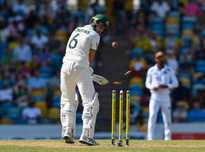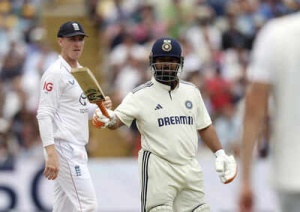The recent and sudden death of Indian television actress Shefali Jariwala has sparked widespread concern and highlighted a disturbing trend: the increasing number of seemingly healthy, middle-aged women succumbing to sudden cardiac arrest (SCA). While the official cause of Jariwala's death is pending post-mortem and forensic analysis, preliminary reports point to cardiac arrest.

Sudden cardiac death (SCD), once considered rare in young adults, is now occurring with increasing frequency, especially in India. This alarming trend has prompted increased scrutiny from the medical community. Cardiovascular diseases account for approximately 28% of all deaths in India, with nearly 10% attributed to sudden cardiac death. A significant portion of these deaths occur in individuals aged 30 to 50.
India's rapid socioeconomic transformation has contributed to lifestyle changes, including:
These factors are fueling a rise in hypertension, obesity, diabetes, and coronary artery disease—all significant contributors to SCD.
While historically more prevalent in men, recent studies highlight the unique and often-overlooked risks faced by women. Unlike men, women who experience SCD frequently have no prior cardiac diagnoses. Structural abnormalities, such as myocardial scarring and ischemic heart disease, often go undetected until post-mortem examinations. Furthermore, many women do not exhibit classical warning signs like chest pain or ECG anomalies, making early detection extremely challenging.
Women in their 40s and 50s face a significant, often silent, risk from underlying cardiac conditions. In younger populations, SCD is frequently associated with inherited or electrical disorders like:
These conditions often remain asymptomatic until a fatal arrhythmia occurs.
In this age group, additional factors such as left ventricular hypertrophy, obesity, and myocardial fibrosis increase vulnerability. The progression of myocardial scarring and fibrosis can be attributed to:
Conditions like Myocardial Infarction with Non-Obstructive Coronary Arteries (MINOCA), which are more prevalent in younger women, often leave no trace in autopsies, further complicating diagnosis.
Stress was a significant factor in Shefali Jariwala's life, who began her career as a teen star. Takutsobo cardiomyopathy (Broken Heart Syndrome), or stress-induced cardiomyopathy, is also a major cause of SCD in women who multitask and experience emotional stress. Jariwala also faced personal struggles related to her divorce, anxiety, depression, and epilepsy—all of which can intersect with cardiovascular health. Psychiatric medications, particularly those that prolong the QT interval, have also been linked to an increased risk of SCD.
Despite the severity of the issue, women are underrepresented in preventive heart care. Symptoms like fatigue, palpitations, or breathlessness are often dismissed or misattributed, leading to delayed intervention. While heart attacks are caused by blocked arteries, cardiac arrest results from electrical disturbances that cause the heart to stop suddenly. Immediate CPR and defibrillation are often the only lifesaving measures, emphasizing the need for early risk identification.
Medical experts are now advocating for more targeted public health strategies. This includes enhancing early screening tools specifically tailored to women, particularly during perimenopause when cardiac risks significantly increase.
The entertainment industry and fans mourn the loss of Shefali Jariwala, but her tragic passing serves as a powerful catalyst for change. Her death highlights an often-overlooked health crisis and the urgent need for systemic improvements in how women's heart health is addressed.
Shefali Jariwala captivated audiences with her on-screen presence. In the wake of her untimely death, she will be remembered as a symbol of awareness, a reminder that the heart’s silence can be fatal, and that women's cardiac health demands immediate attention, investment, and action.
Newer articles
Older articles
 Patience Urged for Australia's Rebuilt Top Order Amidst Test Transition
Patience Urged for Australia's Rebuilt Top Order Amidst Test Transition
 Kohli's Composure Under Pressure: Sharma Credits Mental Fortitude for Key Innings
Kohli's Composure Under Pressure: Sharma Credits Mental Fortitude for Key Innings
 West Indies Coach Daren Sammy Fined, Reprimanded for Umpire Criticism
West Indies Coach Daren Sammy Fined, Reprimanded for Umpire Criticism
 Bangladesh Coach Phil Simmons Leaves Sri Lanka Tour for Medical Check-up in London
Bangladesh Coach Phil Simmons Leaves Sri Lanka Tour for Medical Check-up in London
 Rishabh Pant: Greg Chappell Hails India Star as Cricket Revolutionary
Rishabh Pant: Greg Chappell Hails India Star as Cricket Revolutionary
 Pant's Fearless Hitting vs. England Draws Adam Gilchrist Comparisons From Greg Chappell
Pant's Fearless Hitting vs. England Draws Adam Gilchrist Comparisons From Greg Chappell
 IND vs ENG, 2nd Test: Rishabh Pant's Composed Reply Silences Harry Brook's Sledge About Fastest Century
IND vs ENG, 2nd Test: Rishabh Pant's Composed Reply Silences Harry Brook's Sledge About Fastest Century
 Neeraj Chopra Tips Jasprit Bumrah for Javelin Success, Cites Cricketer's Strength and Fitness
Neeraj Chopra Tips Jasprit Bumrah for Javelin Success, Cites Cricketer's Strength and Fitness
 Gambhir Backs India's Lower Order Despite Headingley Test Collapse, Cites Costly Dropped Catches
Gambhir Backs India's Lower Order Despite Headingley Test Collapse, Cites Costly Dropped Catches
 Carlsen on Gukesh's World Champion Status: 'Impressing Me Still a Question'
Carlsen on Gukesh's World Champion Status: 'Impressing Me Still a Question'